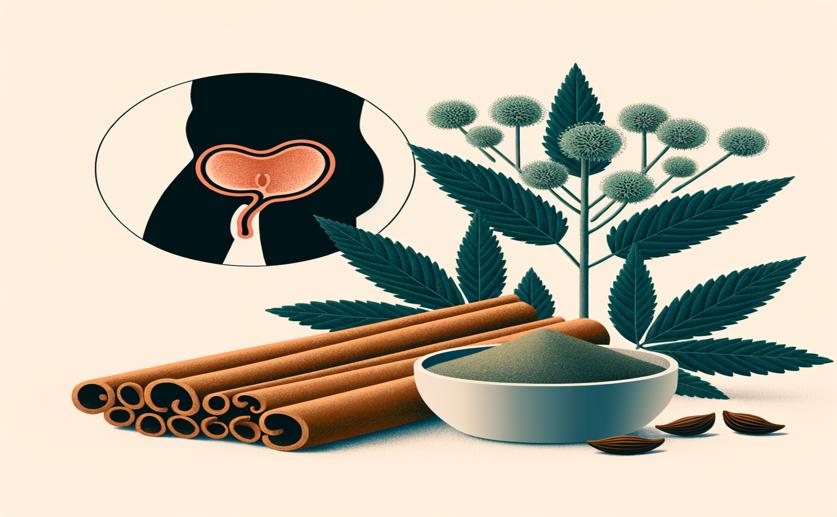
Understanding How Cinnamon and Motherwort Ease Prostate Enlargement
Greg Howard
29th April, 2024

Image Source: Natural Science News, 2024
Key Findings
- A Beijing study found cinnamon and motherwort may help treat enlarged prostate by targeting specific body proteins
- Researchers identified 22 active ingredients in the herbs that interact with 130 proteins related to prostate overgrowth
- The study supports using these TCM herbs for prostate health and encourages further research into their effects
References
Main Study
1) Exploring the mechanism of action of the combination of cinnamon and motherwort in the treatment of benign prostatic hyperplasia: A network pharmacology study.
Published 26th April, 2024
https://doi.org/10.1097/MD.0000000000037902
Related Studies
2) TCMSP: a database of systems pharmacology for drug discovery from herbal medicines.
3) Network pharmacology to explore the anti-inflammatory mechanism of Xuebijing in the treatment of sepsis.
4) Integrating Network Pharmacology and Metabolomics Study on Anti-rheumatic Mechanisms and Antagonistic Effects Against Methotrexate-Induced Toxicity of Qing-Luo-Yin.
5) TCMID: Traditional Chinese Medicine integrative database for herb molecular mechanism analysis.



 25th January, 2024 | Jim Crocker
25th January, 2024 | Jim Crocker